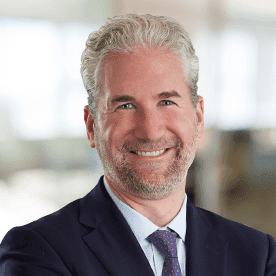by Matthew D. Bass, Head—Private Alternatives, AllianceBernstein
Credit cycles happen. Defaults happen. But negotiated loan structures, lender protections and long-term capital make private credit uniquely resilient.
Private credit has grown rapidly over the past decade—and with growth comes scrutiny. A few recent bankruptcies have raised concern in some corners about overheating.
But credit cycles are natural—and they’re rarely linear or predictable. They reflect the ebb and flow of public and private lending, which expands when underwriting standards loosen and contracts when they tighten. Such shifts are features of a functioning credit ecosystem, driven by evolving risk appetites, economic conditions and competition for capital.
We don’t see defaults as signs of failure—they’re evidence that the system is working as intended. The real question isn’t whether defaults happen, but how they’re handled when they do—and whether they translate into losses.
When managed with discipline, we believe private credit can be one of the strongest risk-mitigation engines in finance—both at the investment level and across the broader market.
Here’s why:
Private credit exists to underwrite complexity, not avoid it. The objective of private credit, in our view, is to create financing solutions that banks and public markets can’t—or won’t—provide. Deep diligence, tailored structures and negotiated protections sit at the heart of the model—that’s where both value and risk control are created.
Lenders in this market have the ability to negotiate covenants and reporting obligations that can allow them to be proactive should a borrower get into trouble. For example, if a company’s leverage exceeds a predetermined threshold, a lender might require asset sales or an equity injection. Lock-up periods give managers time to work through challenges rather than exit in panic.
For borrowers, we think that structure creates stability and partnership. They’re not looking for a syndicate of lenders or public disclosure—they want a single, aligned counterparty who understands their business and can adapt to changes through the cycle. That continuity builds accountability on both sides: borrowers get flexibility that often provides staying power; lenders gain visibility into operations and influence.
In our view, this approach—when managed by experienced hands—turns complexity from a vulnerability into a form of resilience.
Leverage is typically lower and often better placed. Private credit isn’t built on deposits or short-term funding that can be withdrawn in times of market stress. That means no “run risk” and no liquidity mismatch.
Banks are increasingly lending to non-banks, including private credit funds, from senior, secured positions. Private credit managers typically invest in the more complex, less liquid assets that they’re uniquely designed to manage. In that sense, banks can underwrite the underwriter, extending credit to different borrowers on a scaled, risk-appropriate basis.
Private credit investors are getting more diverse, too. Insurance companies are increasingly investing in private credit in unlevered form. That puts risk in the hands of long-term, regulated investors while offering those investors strong return potential that matches their liabilities. In the past, those exposures would have been distributed in tranches into the capital market more broadly.
What’s more, private credit is far from monolithic. It spans corporate, real estate, infrastructure and asset-based, or specialty, finance. Each of these sectors comes with its own cycle. We think this dispersion helps reduce correlation and systemic risk.
And when stress hits, private credit tends to show up, not step back. Long-term, locked-up capital can provide liquidity to borrowers precisely when traditional lenders are retrenching—supporting, rather than constraining, economic activity.
Experience and selection matter. As the industry grows—Preqin projects direct corporate lending and related strategies alone could reach $4.5 trillion by 2030, up from about $2 trillion in 2024—we expect outcomes for investors to vary. And as conditions tighten, performance gaps will widen, too. We think that’s healthy.
But while we think private credit can be a risk reducer, it isn’t risk-free. It is an investment manager’s job to manage the risk. What matters most, in our view, is the ability to minimize defaults through disciplined asset selection—and to minimize loss given default through structure, control and alignment.
No one is immune to credit cycles. The difference is that private credit earns a premium—for complexity, illiquidity and solving problems other markets can’t—while managing downside more directly.
Experience, as we see it, helps with pattern recognition—the vision to see risks before they materialize. Diversification, on the other hand, can increase risk mitigation potential by spreading exposure across borrowers, sectors and structures. We think this approach can help limit the ability of a single outcome to define overall performance.
We believe cycles separate skill from luck. From our perspective, managers and investors who have lived through past downturns—and learned from them—stand a better chance of outperforming in the next one.
Put another way: in private credit, we believe experience and diversification together form the foundation of resilience.
About the Author
Matthew Bass is Head of Private Alternatives and a member of the Operating Committee. As head of AB’s Private Alternatives SBU, he is responsible for the leadership and strategic growth of the business, which includes all of AB’s private market investment strategies. Previously, Bass held various roles in the firm’s Alternatives business (including as head of Alternatives and Multi-Asset Business Development, and COO), where he was responsible for business strategy, sourcing of new investment teams, product development and capital raising. Prior to joining the firm in 2010, Bass was a program director at the US Department of the Treasury, responsible for the design and implementation of various real estate and real estate capital-markets programs pursuant to the Troubled Asset Relief Program. Before that, he was a vice president at The Blackstone Group’s GSO Capital Partners unit, where he was involved in analyzing, evaluating and executing private debt and equity investments. Bass began his career in the Financial Institutions Investment Banking Group at UBS, where he was responsible for executing M&A and capital-raising transactions for banks, asset managers and specialty finance companies. He holds a BS in finance from Lehigh University. Location: New York
Copyright © AllianceBernstein















